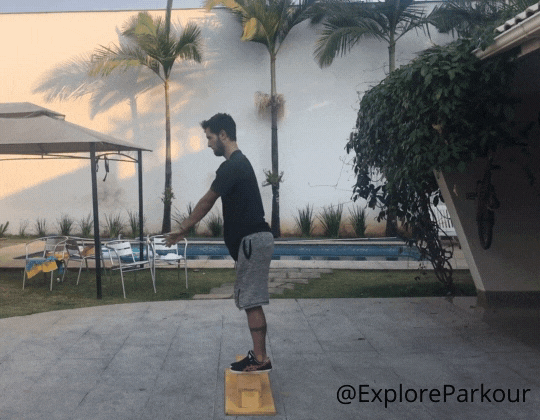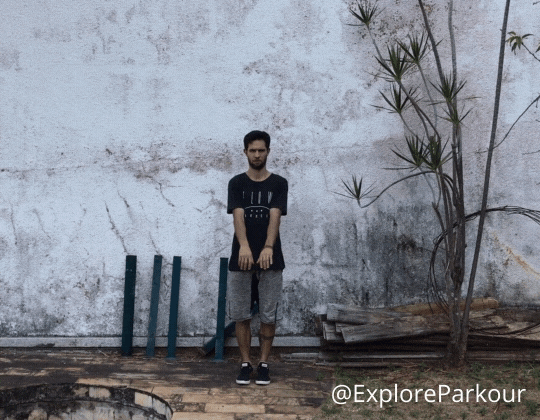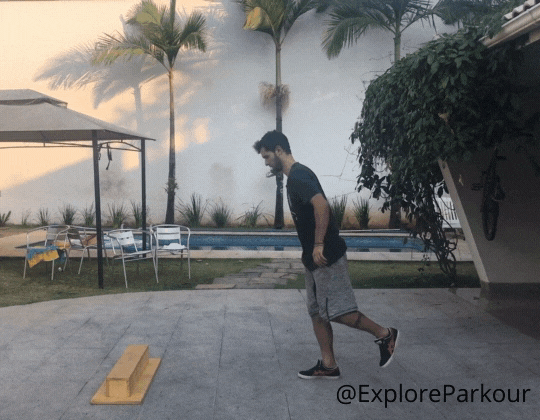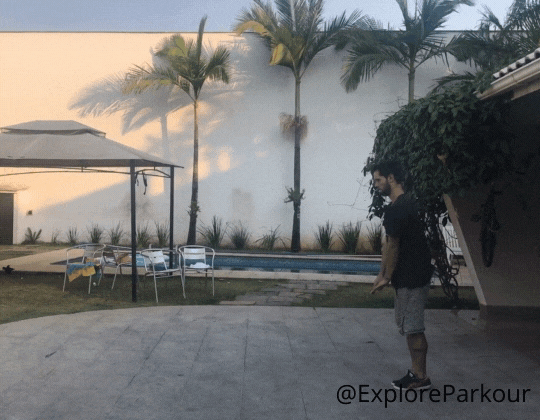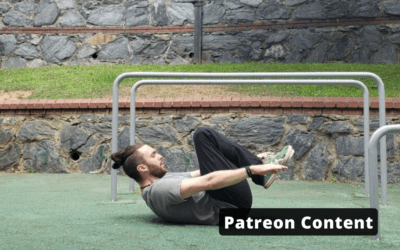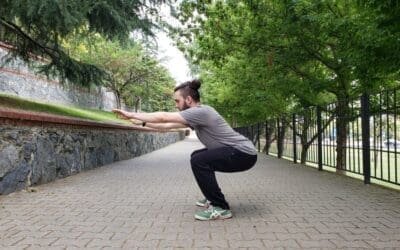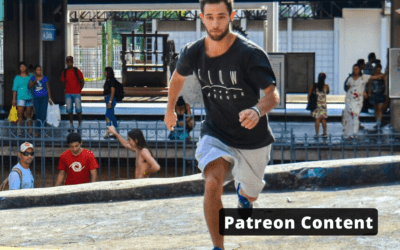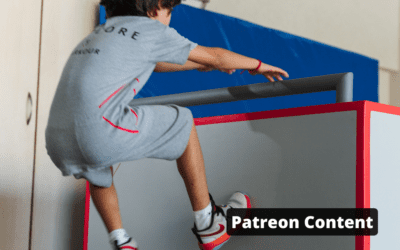Also known as: Pre, Pres.
Movement Pieces
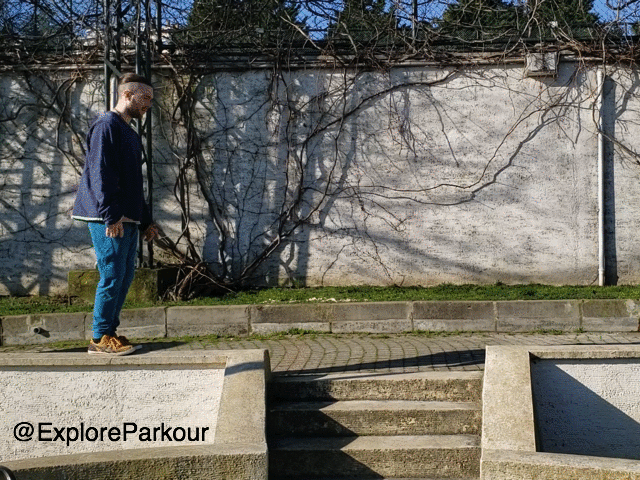
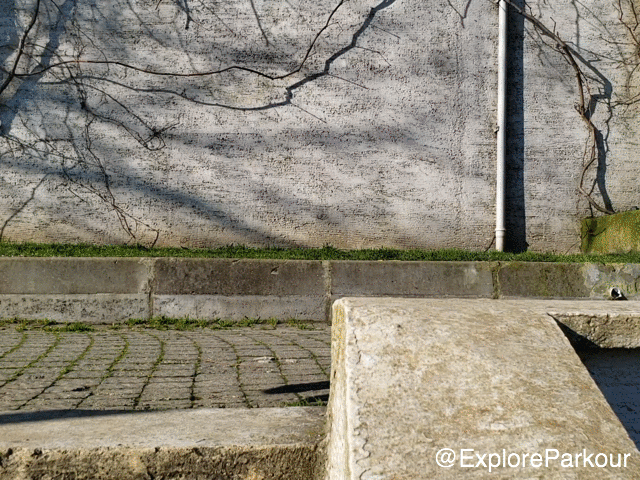
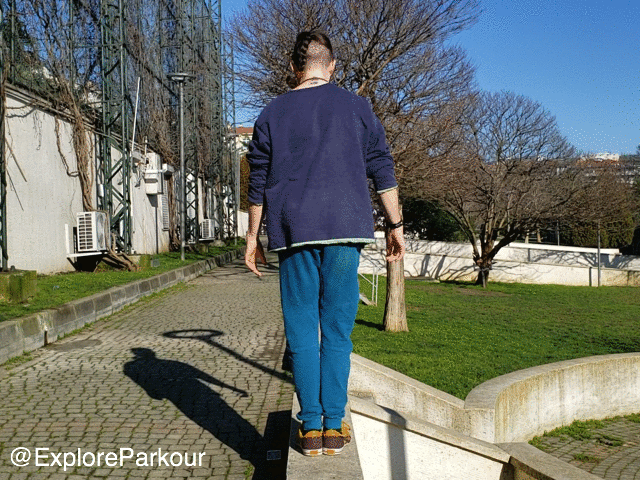
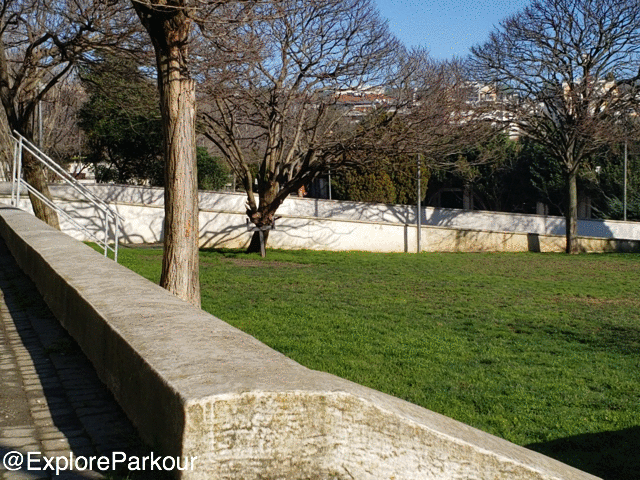

The basic sequence of micro-transitions in this move is…
-Load your arms behind your body to prepare for the forward arm swing.
-Bend your legs into a 1/4 or 1/2 squat with weight on the ball of the foot.
-When you reach the desired squat depth your arms will swing forward and your legs follow with the jump.
-While in the air tuck your legs, then reach with the ball of the foot in a demi point to prepare for the landing.
-Balance the absorption with the resistance using the aforementioned squat technique.
Common Problems – Take Off
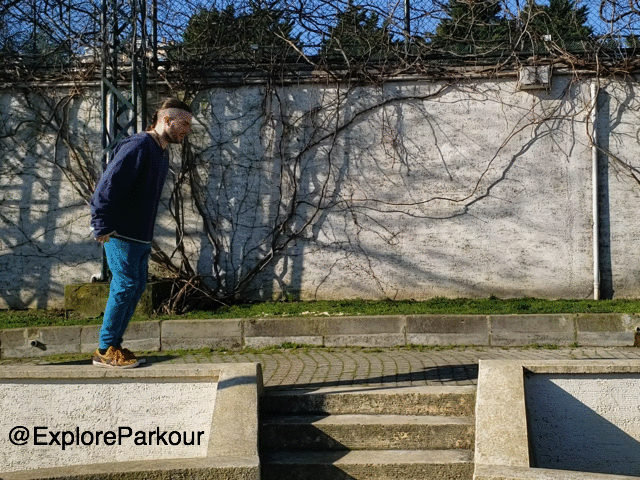
Here you can see the arms jumping together with the legs when you actually want the arms to be leading into the jumping phase of the take off.
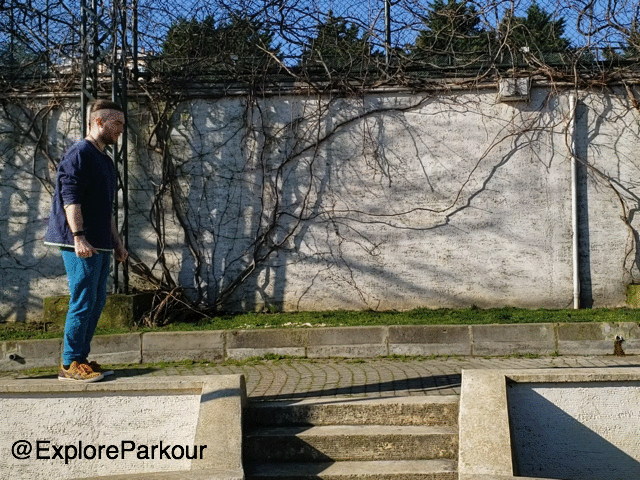 To get the best transfer of momentum from the squat to the push you need to lower your weight gently from each micro-transition. When you rush from the loading phase to the jumping phase you have to fight gravity more into the jump.
To get the best transfer of momentum from the squat to the push you need to lower your weight gently from each micro-transition. When you rush from the loading phase to the jumping phase you have to fight gravity more into the jump.
 When you drag your feet in the air your legs take a longer time to get to their landing point(more circular instead of linear) and that taxes the body more in addition to making it a more difficult challenge for your foot/eye coordination.
When you drag your feet in the air your legs take a longer time to get to their landing point(more circular instead of linear) and that taxes the body more in addition to making it a more difficult challenge for your foot/eye coordination.
When doing max distance standing jumps it can be useful to delay your reaching phase( like in some olympic long jump techniques) but this generally a is a more challenging variation.

It’s important to maintain a strong base when you are getting ready to jump. If you have trouble with your knees tracking inside your toes it may lead to shearing forces on the knee. When creating and absorbing high forces it’s best to find a “proper” alignment while you build up your “improper” alignment durability in a lower impact way.
This is not to be confused with a jump that has an internally rotated hip. Be sure to pay attention to where your hip, knee and ankle are facing while you jump to avoid power leaks or higher risk take offs/landings.
Common Problems – Landing
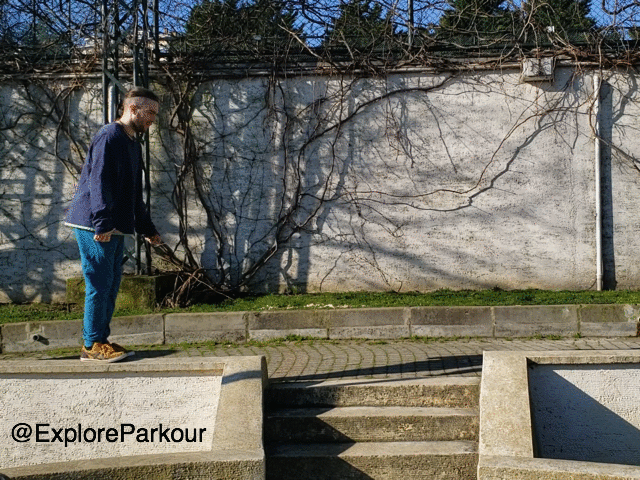
When you extend your legs for landing if you make them too stiff this can cause a slip or send the landing force to your feet/ankles rather than to your muscles. Think about easing into the absorption when you land your jump.
 When the landing phase comes in it’s key to find the sweet spot of absorption to resistance. If you don’t resist enough you can bottom out sending extra force to your joints instead of the muscles.
When the landing phase comes in it’s key to find the sweet spot of absorption to resistance. If you don’t resist enough you can bottom out sending extra force to your joints instead of the muscles.
 This is when, upon landing your ankles collapse in. This can be a stability, coordination, kinesthetic awareness issue or a combination of the aforementioned. Valgus ankle just sets your body up in an non “neutral” position and can subject your joints to extra force.
This is when, upon landing your ankles collapse in. This can be a stability, coordination, kinesthetic awareness issue or a combination of the aforementioned. Valgus ankle just sets your body up in an non “neutral” position and can subject your joints to extra force.
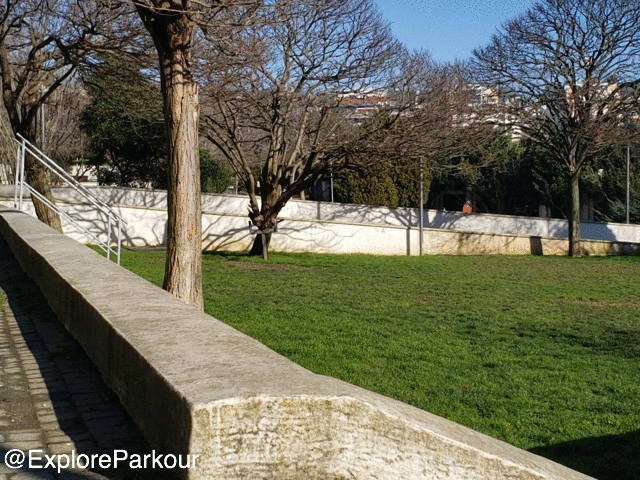 Similar to valgus ankle but the problem this time has to do with the hips, knees and/or toes tracking out of alignment, thus creating energy leaks. When the knees track inside of the toe and/or hip alignment this can create unwanted force on the knee joint. Valgus knee is not to be confused with an internally rotated jumping position.
Similar to valgus ankle but the problem this time has to do with the hips, knees and/or toes tracking out of alignment, thus creating energy leaks. When the knees track inside of the toe and/or hip alignment this can create unwanted force on the knee joint. Valgus knee is not to be confused with an internally rotated jumping position.

This can be due to inactive ankles or not pushing enough from the balls of your feet when you land. Can lead to the infamous “Ankle Thing” as well as just generally making it more difficult to stick.
Related Exercises
Tuck Up
Where should I feel this Exercise? Abs and hip flexors predominantly. Can also use the shoulders and pecs a bit for the arm movement. What’s the Main Purpose? Helps develop power for jumps, flips and other movements (like the cat pass) that require an explosive...
Squat
Where should I feel this Exercise? Quads, Hamstrings, Glutes, and slight tension in your abs are the goals here. What’s the Main Purpose? The squat is great for understanding body alignment with your back and knees for the more high impact movements in Parkour. It...
Run
Where should I feel this Exercise? Generally you can feel this movement in your shin muscles, calf muscles, hamstrings, quads, hip flexors and glutes. It's a great full lower body exercise that also will challenge your breath control and your cardio. What’s the Main...
Related Techniques
Cat Leap
Also known as: Cat, Arm Jump, Cat JumpMovement Pieces The basic sequence of micro-transitions in this move is… - Like a Precision Jump, start with your toes at the edge of the obstacle. Squat - close to 1/3 - and bring your arms down and back as you lean forward -...
Cat Pass
Also known as: Kong, Monkey Vault or Saut de Chat.Movement PiecesThe basic sequence of micro-transitions in this move is… - Choose a stable obstacle close to your hip height, with short width and enough space to place your hands on the top. - Give yourself enough...
Shoulder Roll
Also known as: Parkour Roll, Safety RollMovement PiecesThe basic sequence of micro-transitions in this move is… - Find yourself a flat surface to perform your Shoulder Roll. If you're starting to work on this technique we suggest rubber, foam or grass. With practice...

